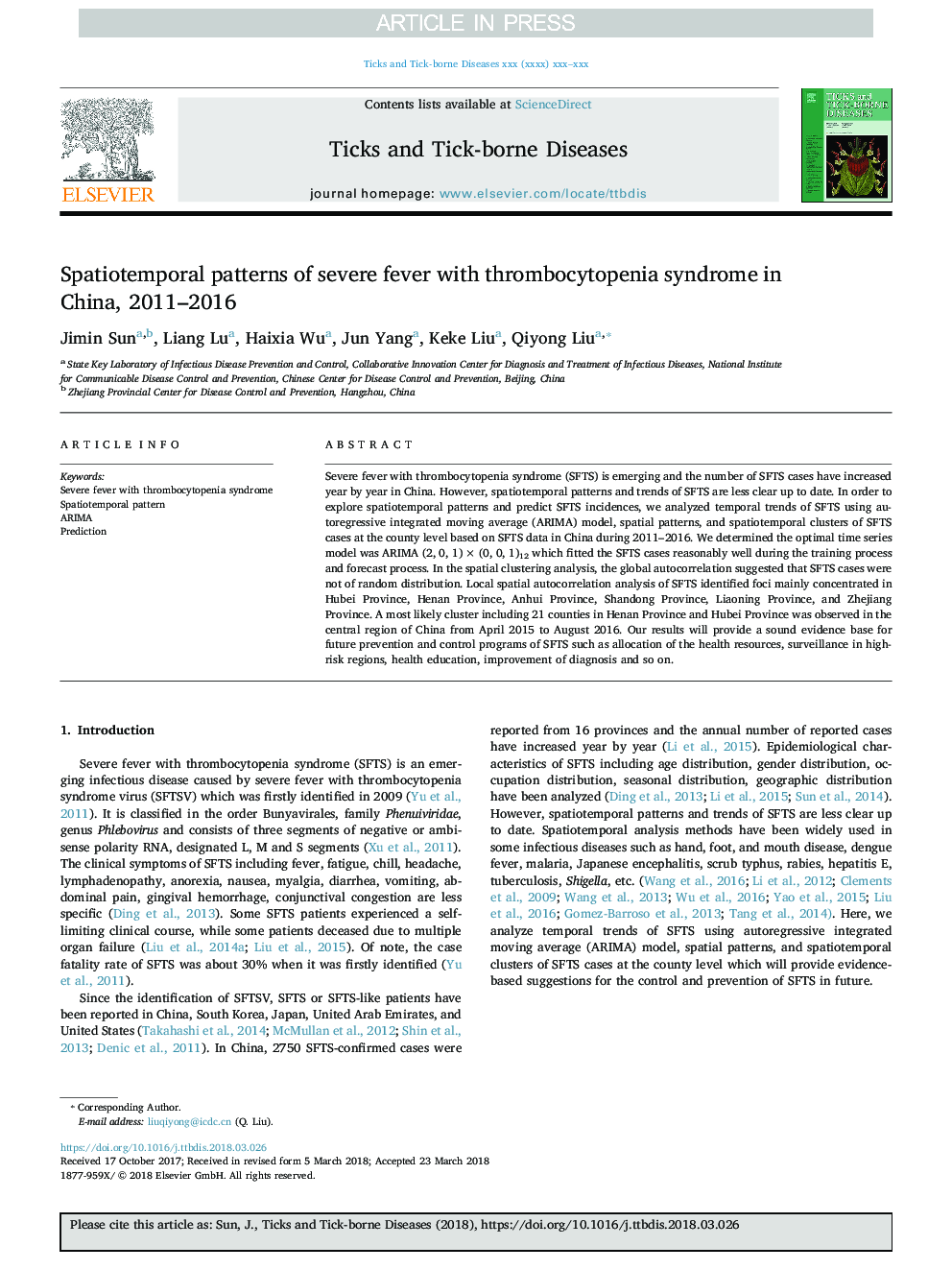| کد مقاله | کد نشریه | سال انتشار | مقاله انگلیسی | نسخه تمام متن |
|---|---|---|---|---|
| 8507261 | 1555960 | 2018 | 7 صفحه PDF | دانلود رایگان |
عنوان انگلیسی مقاله ISI
Spatiotemporal patterns of severe fever with thrombocytopenia syndrome in China, 2011-2016
ترجمه فارسی عنوان
الگوهای اسپاستیتوپروپنیک تب شدید با سندرم ترومبوسیتوپنی در چین 2011-2016
دانلود مقاله + سفارش ترجمه
دانلود مقاله ISI انگلیسی
رایگان برای ایرانیان
کلمات کلیدی
موضوعات مرتبط
علوم زیستی و بیوفناوری
علوم کشاورزی و بیولوژیک
علوم دامی و جانورشناسی
چکیده انگلیسی
Severe fever with thrombocytopenia syndrome (SFTS) is emerging and the number of SFTS cases have increased year by year in China. However, spatiotemporal patterns and trends of SFTS are less clear up to date. In order to explore spatiotemporal patterns and predict SFTS incidences, we analyzed temporal trends of SFTS using autoregressive integrated moving average (ARIMA) model, spatial patterns, and spatiotemporal clusters of SFTS cases at the county level based on SFTS data in China during 2011-2016. We determined the optimal time series model was ARIMA (2, 0, 1)â¯Ãâ¯(0, 0, 1)12 which fitted the SFTS cases reasonably well during the training process and forecast process. In the spatial clustering analysis, the global autocorrelation suggested that SFTS cases were not of random distribution. Local spatial autocorrelation analysis of SFTS identified foci mainly concentrated in Hubei Province, Henan Province, Anhui Province, Shandong Province, Liaoning Province, and Zhejiang Province. A most likely cluster including 21 counties in Henan Province and Hubei Province was observed in the central region of China from April 2015 to August 2016. Our results will provide a sound evidence base for future prevention and control programs of SFTS such as allocation of the health resources, surveillance in high-risk regions, health education, improvement of diagnosis and so on.
ناشر
Database: Elsevier - ScienceDirect (ساینس دایرکت)
Journal: Ticks and Tick-borne Diseases - Volume 9, Issue 4, May 2018, Pages 927-933
Journal: Ticks and Tick-borne Diseases - Volume 9, Issue 4, May 2018, Pages 927-933
نویسندگان
Jimin Sun, Liang Lu, Haixia Wu, Jun Yang, Keke Liu, Qiyong Liu,
